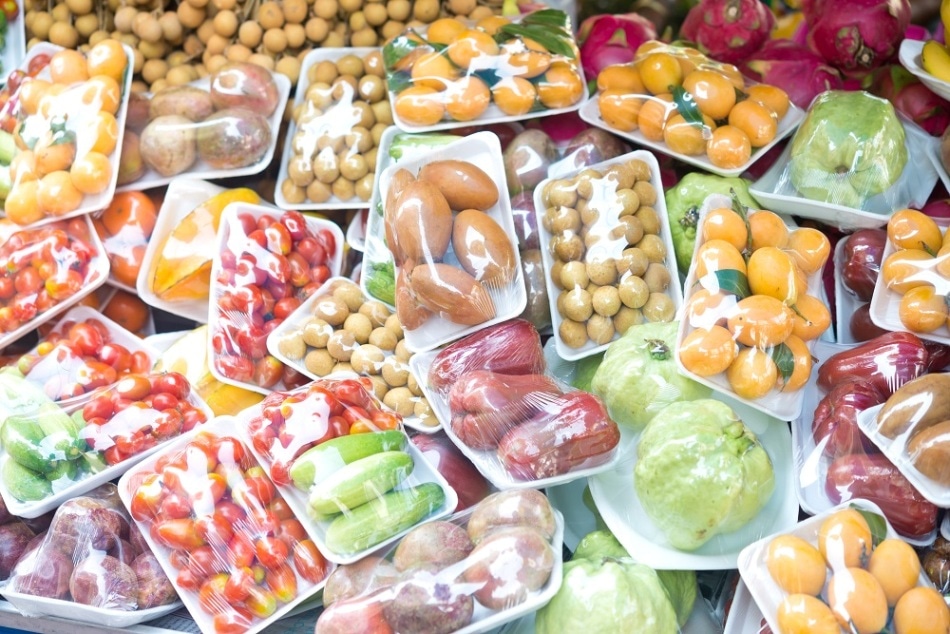Jul 5 2017
The ongoing revolution in packaging is the use of 100% organic materials obtained from the leftovers of agriculture production. A specialist at the Italian National Research Council (CNR) stated that such bioplastics might be as competitive as conventional ones in the early 2020s, although they might not be applicable in all fields.
 CREDIT: Courtesy of SAES Group.
CREDIT: Courtesy of SAES Group.
Imagine transforming the whole waste from crops globally into a biomaterial applicable for packaging. This is not science fiction. At present, for instance, plastics can be produced with waste from tomato crops, and also with unused organic elements of spinach, coffee or cauliflower plantations. Thus, oil derivatives as well as different first-generation organic polymers can be substituted with sustainable and renewable 100% organic raw materials.Researchers at the Italian Institute of Technology (IIT) in Genoa, Italy, are investigating these bio-materials.
The main advantage is their biodegradability, in addition to the opportunity offered to stimulate the process of a circular economy. One possible result could be a shopping bag similar to traditional polyethylene ones, but which is organic and sustainable. If we think about it, it does not make sense today to use plastic that lasts for millennia for a product we use for only five minutes.
Giovanni Perotto, Researcher, The Smart Materials lab, IIT
Synthesizing an entirely organic polymer is not the aim of the study. Rather, the idea is to use materials that may otherwise be wasted. “This is the third generation of bioplastics,” stated Mario Malinconico, Research Director of the Italian National Research Council (CNR) as well as Scientific Co-ordinator of the association Assobioplastiche. “We are talking about a kind of production that has not yet become an industrial reality, but for which we already have a lot of prototypes. Wherever there is an agri-food chain with a large amount of process waste, the production of polymers could possibly be introduced.”
However, the question is how can the materials be made competitive? “To analyze this, it is necessary to evaluate the whole lifecycle, from raw material flows to management costs, taking into account the additional recycling and decontamination issues associated with traditional plastics,” further added Malinconico.
While the cost of producing bioplastic is 50% more than that of conventional ones, two significant factors will bridge the gap between the two: one factor is the cost of setting up huge plants for organic polymeric packaging and the corresponding logistics chains; and the second factor is that directives on non-degradable plastics will turn growingly stringent as the cost of extracting oil will increase every year.
The cost differential will ultimately be cancelled out, and biodegradable polymers could overtake traditional plastic in a few years, probably in the early 2020s.
Mario Malinconico, Research Director of the Italian National Research Council (CNR) and Scientific Co-ordinator, The Association Assobioplastiche
However, what will be the characteristics of the entirely bioplastic prototypes? Close investigation of these bioplastics shows that they have a mild smell—perfume of the plant from which the material was acquired.
“The process we have implemented at IIT is completely water-based,” explained Perotto, “And it takes up to half a day. After optimizing the process, it will take just a few hours from waste organic material to obtain the bioplastic.” An added advantage of this procedure is the production sustainability, which may not be consistent when organic materials are used.
The withstanding ability of bioplastics can be increased from a few months to many years if they are stored in a drawer, but they get rapidly degraded in the soil or in the sea.
The foremost and simple use of this bioplastic is non-food packaging because applying it for food packaging mandates more research regarding food safety.
At present, regulations are less stringent when food is not involved. Moreover, these bioplastics are edible and can be cooked, but they cannot be used at high temperatures, for example as baking paper or for hot beverages.
With respect to this framework, the Italian company Metalvuoto (SAES group) introduced an active packaging at the 2017 global food innovation summit Seeds & Chips, held in Milan, where the packaging had the ability to increase its service life and eliminate the use of preservatives.
The application of a water-based layer on the plastic surfaces of fresh food packaging can absorb gases and substances that can cause rapid spoiling of foods.
New packaging must above all be safe and environmentally friendly. But it must also have high performance and be lightweight in order to reduce logistical costs. It is thus possible to pass on significant benefits to consumers, distributors and even to the environment.
Stefano Tominetti, Managing Director
In lieu of the high standards mandated by the food packaging industry, the most probable situation might be the co-existence of different kinds of plastics in the coming years. Specifically, conventional plastics will be highly opted for in those instances in which compostability is not a basic criterion, for instance, in packaging for recycle or reuse and for high-temperature conditions.